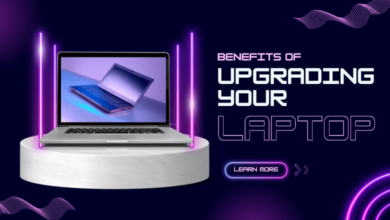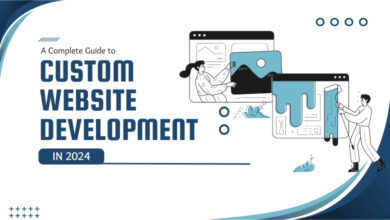5 Innovating Content Strategies with Advanced User Provisioning Tools

In today’s digital-driven world, content strategy transcends the creation of compelling assets; it’s about forging an agile content ecosystem that adapts swiftly to user needs. At the heart of this new paradigm lies advanced user provisioning tools that connect fragmented systems, data, and processes to unlock innovation.
As content teams grapple with the demands of omnichannel distribution, localized messaging, and technology heterogeneity, legacy manual approaches strain under complexity. Siloed identities, static permissions, and disjointed systems bottleneck collaboration, handicapping content velocity and relevance.
This is where advanced provisioning platforms shine—serving as the command center underpinning today’s content ecosystems. By bridging islands of data around users, applications, and infrastructure, provisioning tools create a continuous lifecycle flow. Identities become dynamic, not static, permissions adapt in real-time, and cross-functional teams coalesce around connected insights.
Yet achieving this nirvana requires a multi-pronged approach. Here are some strategies
1. Centralizing Identity and Access Management for Content Efficiency
As the first pillar in building a dynamic content ecosystem, centralizing identity and access management (IAM) brings order to the content chaos. Centralized access management for user provisioning markedly reduces security breaches. This significant disparity underscores the necessity of a unified IAM strategy as the cornerstone.
Within complex content environments involving scores of users, applications, and data, IAM solves a multitude of challenges:
Redundant Access & Identities
Instead of juggling disparate login credentials across content tools, IAM centralizes authentication through single sign-on (SSO). This eliminates password fatigue while reducing redundant access points that increase attack surfaces.
Limited Visibility
With IAM, content teams gain a hub to manage user lifecycles from start to finish. Integrations with HR systems automatically trigger access changes on job transitions, while de-provisioning ensures permissions align with employment status.
Excess Permissions
Role-based access controls within IAM systems restrict privileges only to what users need for their functions. This minimizes access creep, containing content risks without impeding productivity.
Compliance Gaps
Maintaining control over external sharing and collaboration is vital for confidential content. IAM makes it easy to configure contextual access policies that follow content across applications.
As the content landscape grows more fluid and collaborative with users joining from business units, partners, and beyond, IAM will continue to increase in importance.For content teams, the benefits boil down to unencumbered access, security, and insights.
2. Automation in Content Provisioning: A Game Changer
Building on the foundation of a robust IAM system, the next leap forward is automation in content provisioning. The surge in intelligent automation initiatives underscores the urgency and benefits of embracing automation in our content strategies.
Automated user lifecycle management streamlines onboarding and offboarding, ensuring content access aligns with user status. Automated provisioning and de-provisioning boosts IT efficiency by up to 90%. For content teams, this means slashing the red tape around requesting or revoking access to tools. Scarce IT resources can shift focus from repetitive tasks to innovation.
3. Personalized Content Experiences
Advanced user provisioning can be leveraged to implement role-based access to content. Tailor access permissions are based on an individual’s role within the organization, ensuring that employees have access to the content relevant to their responsibilities.
Use user provisioning tools to create dynamic user profiles that adapt to changes in roles or responsibilities. This enables the delivery of personalized content experiences aligned with an individual’s current position or project.
4. Utilizing SaaS Management Platforms for Streamlined Content Delivery
The final piece of our strategy puzzle lies in the utilization of SaaS Management Platforms. These platforms are not merely tools; they are essential drivers of content strategy success.
SaaS management platforms converge workflows by connecting the dots between users, permissions, and content tools. This centralized control plane enhances visibility while allowing IT teams to configure guardrails such as encryption that balance governance with productivity. For content creators, the result is frictionless access and collaboration inside and across applications.
5. Data-Driven Content Governance:
Integrating user provisioning tools with usage analytics platforms can provide insights into how employees interact with content. Use this data to refine access policies, optimize content organization, and enhance overall content governance.
Implement content lifecycle management through automated provisioning. Ensure that content is appropriately archived or removed when employees transition roles or leave the organization, preventing obsolete or unauthorized access.
The Complete Package
It’s clear that the integration of centralizing IAM, embracing automation, continuous monitoring of SaaS applications, and utilizing SaaS Management Platforms creates a comprehensive and forward-thinking content strategy. These elements, backed by compelling statistics, not only enhance the coherence of our approach but also ensure that our content strategies are equipped to meet the challenges of an ever-evolving digital landscape.
Frequently Asked Questions (FAQs)
How does centralized IAM influence content strategy effectiveness?
Managing identities and access in one place provides content teams with a unified view of users and their permissions. This allows them to align access with initiatives, scale distribution efficiently, and reduce security risks.
What are the primary benefits of automating content provisioning?
Automating provisioning and de-provisioning boosts IT efficiency dramatically while empowering content teams to self-serve access requests and collaborate freely. Additional benefits include faster onboarding, reduced risk, and greater focus on strategy vs manual tasks.
How can continuous monitoring of SaaS applications refine content strategies?
By analyzing usage data from SaaS monitoring, content teams can optimize formats, tools, distribution channels, and other aspects to boost engagement. Monitoring also uncovers shadow IT risks, improves decision-making, and sustains strategies as needs evolve.
Final Takeaway
With centralized IAM solving fractured access controls, content teams gain a scalable launchpad to augment strategies with automation, usage analytics, and integrated platforms. As the next section will explore, connecting IAM to intelligent provisioning, monitoring, and workflow tools propels content ecosystems to new heights—where innovation flows freely but risks stay secured.
By leveraging user provisioning tools to connect the pillars of identity management, automation, monitoring, and SaaS management, content teams can transform rigid strategies into flexible, data-driven ecosystems where innovation thrives. As the bedrock that underpins content operations, advanced provisioning technology holds the key to strategic agility and maturity.







